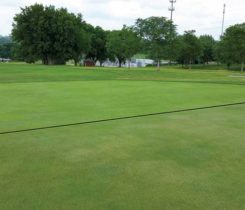Practice what you teach: Adhere to course maintenance routines
Another holiday season is over and we have months of winter to look forward to. That means this is a lethargic time for me. My time is mainly spent eating too much, combined with a real lack of healthy activity. Invariably at year’s beginning, I decide to activate my fitness center membership. With the same dedication I’ve shown in previous years, I travel to the fitness center with the goal of getting myself back in shape as soon as possible. Unfortunately, the same outcome occurs — the commitment to my exercise routine is short-lived.
As I lay on the couch this past Sunday watching a nondescript movie and eating popcorn, I began reading a journal article, which usually is a precursor to my Sunday nap. This journal article, however, piqued my interest. It was entitled, “Adherence to Exercise Prescriptions: Effects of Prescribing Moderate Versus Higher Levels of Intensity and Frequency,” published by University of Florida medical researchers in the Journal Health Psychology.
The introduction of the article mentioned, either reassuringly or disturbingly, that 75 percent of American adults do not achieve a sufficient level of activity. This inactivity may in part be due to the public perception that frequent vigorous exercise is required to achieve a health benefit. I would have to say I include myself in that public perception.
The researchers involved with this study found that the greatest adherence (defined as completion of the study) was the greatest with the populations under moderate-intensity conditions and higher frequency. Higher intensity actually decreased adherence to the exercise program.
My take-home message from the article is that I would become healthier if I worked out by walking every day or every other day, rather than what I normally try to do, which is pound out a marathon run. I would, according to this study, be a healthier person by simply sticking with a semi-regular routine of walking.
I’m not at the moment trying to change my career path and write a column for the magazine Fitness. The likelihood of this occurring is about the same as the song “Thank God I’m a Country Boy” again reaching No. 1 on the Billboard Hot 100 charts. However, the concept of increased frequency with less intensity to achieve significant health benefits is analogous to a number of golf course management practices.
For example:
Light, frequent sand topdressing. The frequency of the treatment is high (as in applying weekly), but the intensity is moderate (as in a light amount of sand). The health benefit is that less anthracnose will develop (demonstrated by research at Rutgers University). The adherence or loyalty to the practice of light, frequent topdressing is higher than a heavy, infrequent topdressing program because a heavy (intense) topdressing is more likely to be cancelled or skipped because of environmental or golfer pressure.
Using plant growth regulators. Plant growth regulator programs, especially on putting greens, have evolved over the last two decades from intense (higher rate) with less frequency (monthly) to less intense (lower rate) but more frequent application (weekly or biweekly). The evolution of more frequent but less intense applications has led us to observe greater health benefits to the turf. This has been documented by several researchers.
I can think of several other management practices that fit into the frequent-and-moderate intensity category. These examples and others conceptually provide the framework for two principles I teach: Small changes in management practices can greatly impact turf health; and management practices accumulate. When you think about it, these principles follow the concept of improved human health through frequent-but-moderate exercise and staying loyal (adhering) to the routine.
Regarding my own health, maybe it’s time to practice what I teach.












